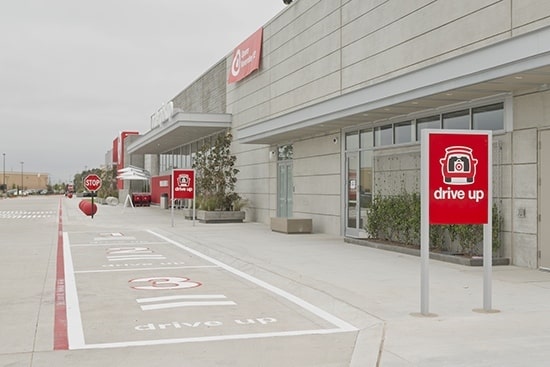One of the clear trends of the past few months has been the inflection in eCommerce spending. As we recently examined, eCommerce is up 32 percent year-over-year according to eMarketer. And it’s almost to the point of offsetting physical retail declines, meaning revenue is basically flat in 2020 (good news, considering).
Given that it’s Thanksgiving week here in the U.S., we decided to revisit this analysis but with a grocery spin. How has grocery as a retail category fared in the past several months? And do shifting consumer shopping patterns — along with shifting retailer fulfillment models — represent permanent new habits?
By the Numbers
To answer that question, we look to data recently released by Quotient. The firm has tracked eCommerce spending, platform use, and shopper behavior. When looking at the grocery category specifically, physical store visits have not-surprisingly declined in 2020, while eCommerce (delivery and pickup) have exploded.
Specifically, Quotient reports that average weekly grocery eCommerce sales grew 124.1 percent. This represents higher-frequency shopping as well as the expansion in the number of shoppers. For the latter, Quotient reports that weekly new online grocery signups are 297 percent greater than pre-Covid levels.
Getting back to the question of temporary versus permanent habits, Quotient measured ongoing retention during pandemic-affected months. There, it found that 40 percent of online grocery shoppers in March and April continued to use this channel in the subsequent months. This suggests some momentum.
Another notable metric is the number of orders placed. When looking at the period from May to September, online grocery shoppers placed 7 or more orders on average. This is 2.5x greater than the average seen during the same period last year. So again, eCommerce growth is happening in users and average spend per user.
Elsewhere in the findings, Quotient reports that 25 percent of online grocery orders include a digital coupon. This could be a sign of the times, as a recessionary period is compelling cost-saving behavior. Digital grocery shopping also has an inherently easier coupon-redemption process than physical shopping.
Either way, the coupon prevalence is a demand signal that retailers should internalize. Having that capability in the shopping flow could become a competitive edge, or just table stakes, for local businesses that want to attract this new growing subset of online grocery shoppers — a consumer profile that’s increasingly relevant.
Can’t Unring That Bell
Stepping back, one lesson here is something that we continue to see: consumer spending isn’t declining but it is shifting. So those who can shift with it will be the survivors of the Covid era. Exemplars so far include Starbucks (mobile-order), as well as Walmart and Target (curbside pickup). The proof is in the numbers.
The previous examples deviate from grocery (though Walmart and Target do have Grocery departments). But the point remains that consumer behavior is shifting, potentially in permanent ways. Even in a post-Covid world, consumers will have seen the benefits of eCommerce and stick with it. We can’t unring that bell.
“The influx of new shoppers onto eCommerce platforms during COVID are sticking around,” said Quotient SVP of Data & Analytics Blake Burrus in the study, “Retention and repeat usage are incredibly strong.”





